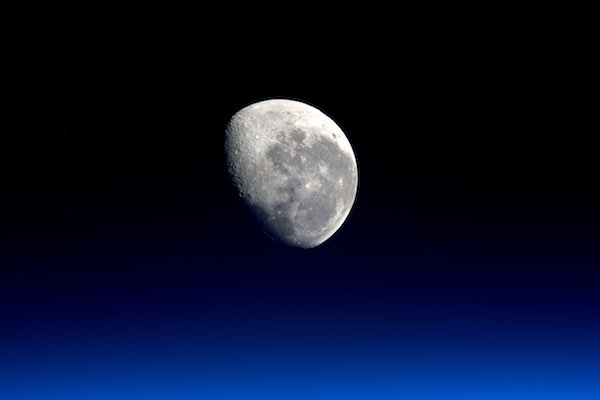Re-evaluating the Moon’s role in Earth’s past and futureby Peter Kokh
|
| Earth-like planets around other stars without such a similarly substantial moon may well be out of luck. |
If this is so, a major overhaul of how we look at the Moon, and classify it, is in order. Currently, the search is on for “Earth-like planets” around other stars. But, if we find twins of our home planet out there, but without a similarly sizable moon, we may have only found Earth-wannabe “duds.” It is not enough to look for and find rocky planets similar to Earth in mass and within the “Goldilocks zone”—the distance from its sun where liquid water, and thus oceans, can exist on its surface.
Among the other planets in our solar system, one stands out: Pluto-Charon, a binary planet. The definition of a “binary planet” or “binary star” is two worlds that revolve around a common center of gravity between them. By comparison, most other moons in the solar system are very low mass relative to the planets they orbit, and their centers of rotation are close to the center of their planets.
The Moon, however, is massive enough that the center of gravity for the Earth-Moon system is relatively near to Earth’s surface: only about 1,700 kilometers below, just one fourth of the way to Earth’s core. And it is the position of this common center of gravity that may be responsible for the Moon’s influence on the generation of Earth’s magnetic field, and thus protects life on Earth’s surface and in low orbits from fatal doses of radiation.
Earth-like planets without such a similarly substantial moon may well be out of luck.
The Moon and our future
The Moon’s importance does not end with helping life exist on Earth. In the future, use of lunar materials may eventually enable a substantial buildout in geosynchronous orbit, with giant platforms that can host hundreds of satellites each, providing power, repair services, and more. Further, without lunar materials, building large solar power stations and/or power relay stations in orbit would not be feasible.
| It seems that without our substantial moon, Earth’s economic future would be considerably less bright than it would now seem to be. |
Geosynchronous satellites are already responsible for hundreds of billions of dollars of annual economic product. If GEO were a nation, it would be among the wealthiest. With lunar materials, its economic value could soar well beyond that.
It seems that without our substantial moon, Earth’s economic future would be considerably less bright than it would now seem to be. The Moon is responsible for us getting this far, and that, apparently, is just the beginning.
Earth-Moon: a new type of “binary planet?”
Perhaps we need to define a second type of “binary planet”: one in which the common center of gravity is in the primary’s upper mantle, allowing it to generate a massive magnetic field with Van Allen belts, allowing life to colonize the planet’s surface, not just its soils and oceans.
It would seem that truly “Earth-like” planets—scratch that, truly “Earth-Moon-like systems”—will be only a small fraction of “Earth-like” planets that astronomers had hoped to find. But in a galaxy as large as ours, in a universe as large as ours, there must still be many world-moon pairs like ours, however far apart and rare they may be.
